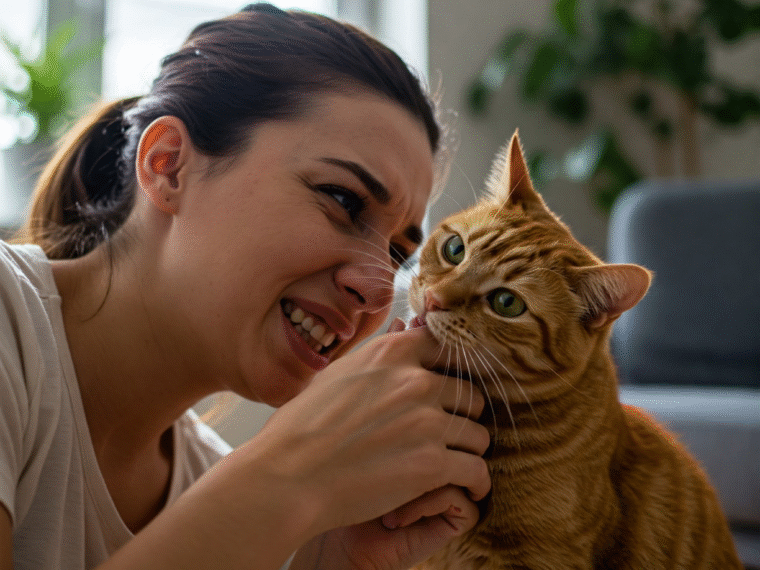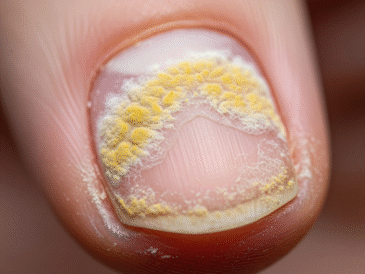🔴 3. Play Aggression
- Quick, energetic bites during play
- Pouncing, chasing, and grabbing hands or feet
- Usually seen in kittens or young cats
Cats are natural hunters, and they often see hands or feet as “prey” during playtime. This is especially true if your cat wasn’t properly socialized or raised without littermates.
What to do:
- Never use your hands as toys
- Redirect with interactive toys like feather wands or laser pointers
- Ensure daily play sessions to release energy
⚠️ 4. Fear, Stress, or Defensive Biting
What it looks like:
- Biting when touched unexpectedly or cornered
- Hissing, growling, arched back
- Dilated pupils, flattened ears
If a cat feels threatened or scared, biting becomes a defense mechanism. This behavior might happen during vet visits, when meeting strangers, or when startled.
What to do:
- Give your cat space and a safe place to hide
- Avoid sudden movements and loud noises
- Use calming pheromone diffusers (like Feliway)
- Consult a feline behaviorist if it’s frequent
🧬 5. Medical Issues or Pain
What it looks like:
- Biting when a specific area is touched
- Sudden change in behavior
- Limping or signs of discomfort
Cats in pain may bite to protect themselves, especially if you unknowingly touch a sore spot.
What to do:
- Take your cat to the vet for a full checkup
- Watch for other signs of illness (changes in appetite, grooming, or litter box behavior)
💡 Quick Guide: Bite Types and What They Mean
| Type of Bite | Likely Meaning |
|---|---|
| Gentle Nibble | Affection / Social Bonding |
| Sudden Sharp Bite During Petting | Overstimulation |
| Playful Chomp | Play / Hunting Instinct |
| Defensive or Hard Bite | Fear or Pain |
✅ Tips to Prevent and Manage Biting
- Observe body language – Watch for signs of discomfort or excitement.
- Provide enrichment – Bored cats often bite to release pent-up energy.
- Avoid punishment – Hitting or yelling can lead to fear-based biting.
- Respect boundaries – Every cat has a different tolerance for touch.
- Reward calm behavior – Positive reinforcement works wonders.
🧠 Did You Know?
- A 2021 study in Applied Animal Behaviour Science found that over 65% of biting incidents in domestic cats occurred due to miscommunication during human interaction, especially during petting.
- Researchers emphasize the importance of educating owners on feline body language to reduce unwanted behavior.
🐱 Final Thought
A cat’s bite can mean many different things, from love to irritation to fear. Understanding the context, body language, and your cat’s personality is key to interpreting the message. With patience, respect, and proper guidance, you can strengthen your bond and reduce biting incidents altogether.




